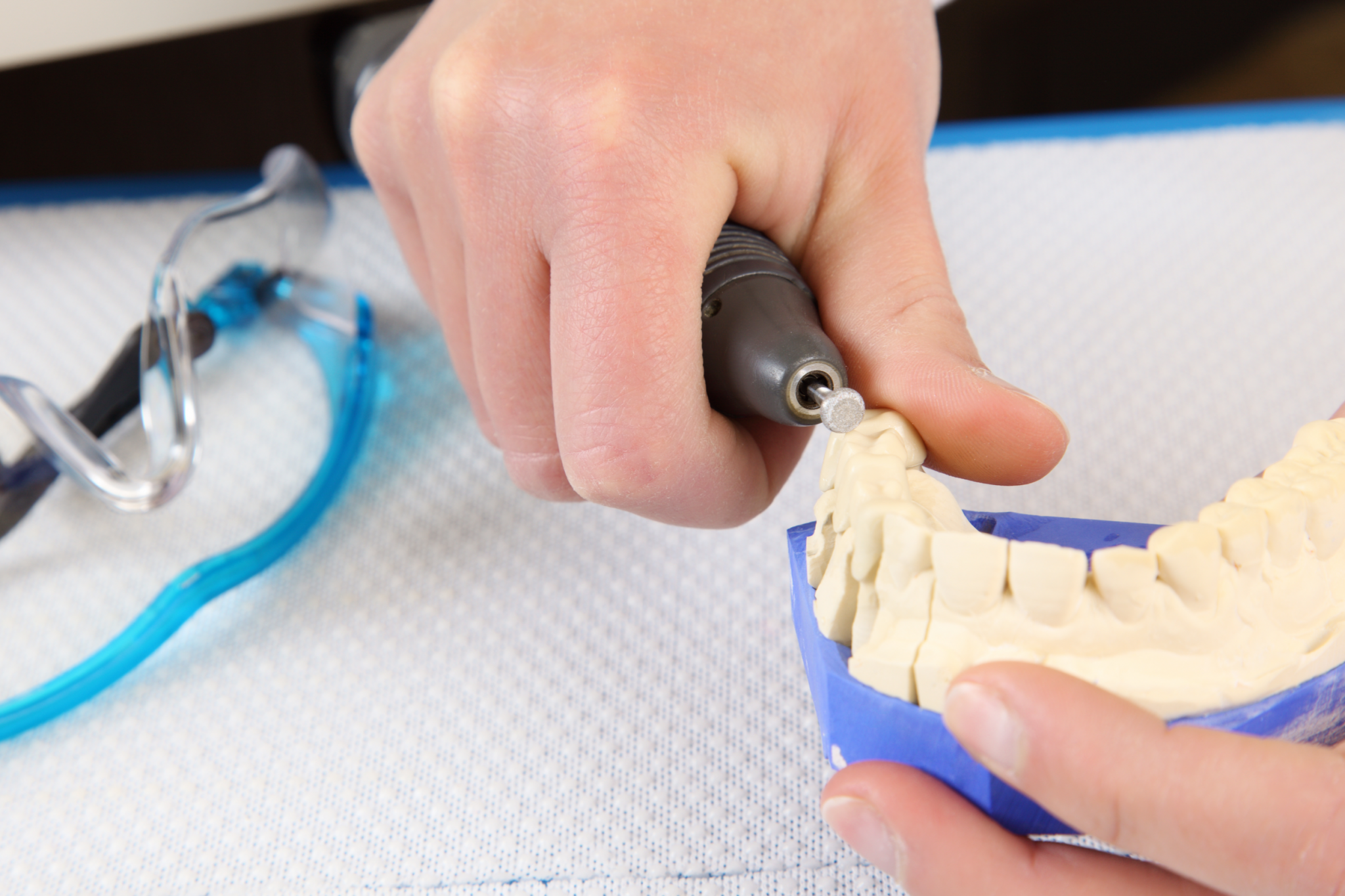CBD, IPO, MPF – Hong Kong is the land of acronyms, but mention IPR and even your most knowledgeable friend might think you are talking about Intellectual Property Rights.
If your dentist tells you about IPR, they’re not concerned about whether you are illegally downloading movies online (although you shouldn’t be doing that). They’re talking about Interproximal Reduction, the process of creating tiny amounts of space between pairs of teeth in order to allow them to move as needed during treatment.
Why do you need IPR?
If your teeth are crowded, there may not be sufficient space for your teeth to move into alignment. Your teeth will start getting in their own way as they move into new positions.
There are two main ways to create space.
Interproximal reduction
The first way is through Interproximal Reduction where your dentist uses finely abrasive strips or discs to shave the sides of your teeth and teeth enamel.
Teeth extraction
The second way is to extract a few teeth if more space needs to be created.
Before you put on invisible braces, your dentist will examine your teeth and advise you whether you need to undergo IPR or teeth extraction.
IPR only shaves off between 0.2 to 0.3 millimetres of your enamel. The enamel on your teeth is generally about 2.5 mm thick. If you have very little interproximal enamel, your dentist may advise you not to undergo IPR.
0.2 to 0.3 mm doesn’t look like much, but your dentist will generally do IPR on a number of your teeth, which means the total space created can be up to 5mm.
IPR is generally preferred over teeth extraction because your dentist has more control over the amount of space created. However, if a substantial amount of space is needed, your dentist may recommend teeth extraction instead.
“But… but… other invisible braces sellers don’t provide IPR!”
Yeah… that’s because they are DIY invisible braces.
With no in-person consultation with a local, qualified doctor or dentist in their process,
- Any additional procedures like IPR are off the table,
- There’s literally no-one to tell you if you need or don’t need IPR
Getting invisible braces without seeing a dentist to know if you need IPR, is like buying shoes without knowing or measuring your foot size.
IT’S PAINFUL.
That’s why it’s so risky to go with an invisible braces brand that does not let you see a doctor or dentist in person.
Is IPR painful?
No, it is not painful.
There are no nerve endings in the outer enamel of your teeth so the procedure will not hurt.
You might feel some discomfort as pressure will be applied to your teeth. Some people have said it feels similar to teeth polishing.
We all know how important enamel is, which is one of the main positives for IPR, as it does not damage your teeth because only a small amount of enamel is removed. You should not feel any tooth sensitivity or face an increased risk of tooth decay as a result.
What happens during IPR?
Your dentist can use a dental drill with a diamond-coated bur or disk at the end. He or she will run it along the sides of your teeth to shave off your enamel.
Alternatively, your dentist may use a diamond-coated strip and run it back and forth along the sides of your teeth to file them down.
Kind of like filing your nails, or sandpaper-ing something in your secondary school Design & Technology class.
There might be some noticeable gaps in your teeth after your IPR procedure. These gaps should close up when you start wearing invisible braces and your teeth start to shift into their new positions.
A Fearless Smile Begins With Straighter Teeth
Embark on your journey to straighter teeth with Zenyum.





